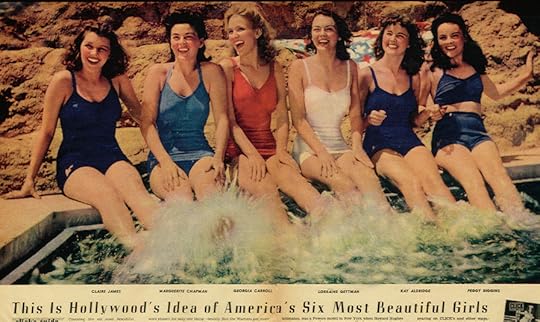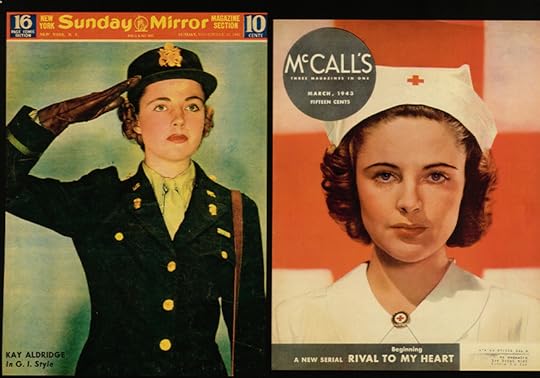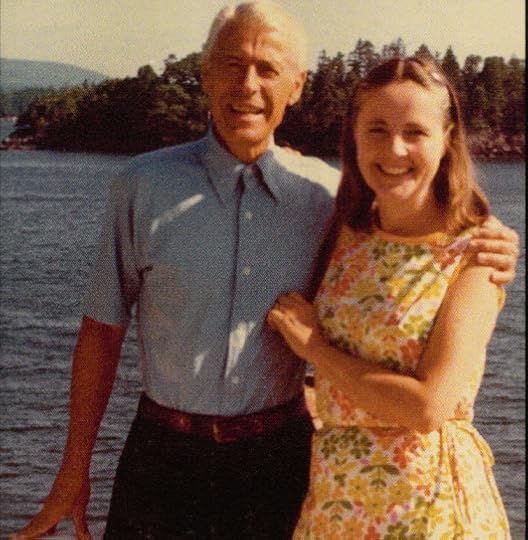Hang Onto That Cliff! Kay Aldridge, “The Serial Queen”
Return with us to those thrilling days of yesteryear, when Saturday afternoon movie matinees had an action-packed serial just before the main feature, and none other than Kay Aldridge was The Serial Queen!
There she was in 1942, the cover girl and model, one of the “most photographed girls in the world,” kicking and clawing in “Perils of Nyoka”! And the next year in “Daredevils of the West,” horseback ridin’ and rifle shootin’!
“Millions of hysterically screaming kids in 11,000 U.S. movie theaters greet Republic’s cliff-hanging serials with cheers for the lady whose life hangs in the balance,” said one newspaper column at the peak of her fame. “Kay Aldridge, tall, willowy, with a placidly beautiful face …”
Aldridge, who died at age 77 in 1995 as a much-loved figure in Camden, Maine, the small coastal town where she had settled and went by her married name of Kay Tucker, may be mostly forgotten now. But the Library preserves a unique take of her life in “Memoirs of a Southern Belle,” a scrapbook/pictorial biography by her daughter, Carey Cameron Ferrero.
 Six models from the Powers Agency in New York were selected to go to Hollywood to appear in “Vogues of 1938.” Kay Aldridge, second from the right, would go on to appear in 25 films, including three popular serials. Photo: Courtesy of Carey Cameron Ferrero.
Six models from the Powers Agency in New York were selected to go to Hollywood to appear in “Vogues of 1938.” Kay Aldridge, second from the right, would go on to appear in 25 films, including three popular serials. Photo: Courtesy of Carey Cameron Ferrero.Going through her mom’s house after the funeral, Ferrero writes that she found “several dusty cardboard boxes” of her mother’s “brief but splashy career as a model, cover girl and actress.” Inside were a jumble of magazine covers, movie stills, family photos, diaries, fan letters (many containing marriage proposals), newspaper clippings and the like.
Aldridge had never been shy about anything — an affectionate editorial in The Camden Herald after her death noted her “lack of bashfulness for the center stage” — but many of the images and anecdotes were new to her daughter. Many of them had been in scrapbooks that had fallen apart years ago, but were now scattered in no real order.
Ferrero realized that, if she assembled the material into a narrative, it would tell the story of her mother’s “9-year career and its lifelong consequences.”
“The images — some spectacular, others charming, others embarrassing, the majority of them emblematic of American popular culture before and during World War II — compelled me to want to examine the contents of every one of the boxes,” she wrote in the foreword.
The result is an engaging story of a young woman who made it from difficult childhood circumstances in rural Virginia (her father died when she was 5) to almost instant fame by the time she was 19. A relative arranged for her to walk into the fancy Powers Agency in New York and ask for a modeling job — and she was shooting an ad that afternoon to run in Vogue magazine.
 Kay Aldridge on the cover of LIFE magazine, then one of the most popular in the country, in 1939. Photo: Courtesy of Carey Cameron Ferrero.
Kay Aldridge on the cover of LIFE magazine, then one of the most popular in the country, in 1939. Photo: Courtesy of Carey Cameron Ferrero.Many of the personal items in the scrapbook have a touching immediacy, like her diary entry of March 1, 1937, the day she signed her first movie contract. She was 19 years old and on her own in Hollywood: “I am thrilled and frightened,” she wrote. “I feel that the course of my life is changing. I am a scared little girl tonight.”
Success blew in — she was on at least 44 magazine covers and in 25 films in nine years. She hung out with stars like Jimmy Stewart and Henry Fonda and was featured on radio shows and in newspaper profiles. You’d see her on the cover of major national publications such as Life, Look, Redbook and Collier’s. She was the smiling girl in ads for Chrysler cars, Jergens skincare and any number of cigarettes — Camel, Chesterfield, Raleigh, Lucky Strike. You’d also see her in newspaper ads for long-forgotten products such as WILDROOT Hair Tonic and Dr. Lyon’s Tooth Powder.
But that quick success was also one of her Hollywood limitations, she told an interviewer years later. She was so young, so green, and scarcely had time for acting lessons before finding herself in small film roles. Since she was a star model, she didn’t take those little roles seriously and squandered opportunities, she said.
“I always wanted to do light romantic comedy,” she told Merrill T. McCord, author of the 1979 short biography, “Perils of Kay Aldridge: Life of the Serial Queen.” “I was always, I felt, miscast as this superior Eastern society type girl and haughty. Since I couldn’t act and it (the role) wasn’t natural to my personality, it was like casting me across the grain. … I think my career was handicapped by the overemphasis on how photogenic I was supposed to be.”
Dropped from her contract, she took the lesser role of starring in a serial, “Perils of Nyoka,” by Republic Pictures. The 12-chapter story, with one episode coming out each week to draw kids back to the cinema, was popular. It paid good money and was notable because featured as actress as the headliner. She committed to the bit, drawing headlines for doing many of her own action sequences and getting bruises in the process.
 Aldridge was on the cover of at least 44 magazine in her 9-year career, with many during World War II. Photo: Courtesy of Carey Cameron Ferrero.
Aldridge was on the cover of at least 44 magazine in her 9-year career, with many during World War II. Photo: Courtesy of Carey Cameron Ferrero.The trailer for her next serial, “Daredevils of the West,” billed her as “The Serial Queen” and promised “12 EPISODES OF … PUNCH-PACKED, HAIR-RAISING, THRILL-CRAMMED ACTION!” (On screen, the exclamation point is an arrow, of the type that keeps getting shot at our heroine.)
Serials faded into the Hollywood sunset after the 1950s, though they would remain popular with film buffs and in the memories of children of the era. Filmmakers George Lucas and Steven Spielberg modeled their hugely popular “Star Wars” and “Indiana Jones” movies on the serials they loved as kids.
 Aldridge married Richard Tucker, her second husband, in the 1950s. He had a second home in Camden, Maine. She remained there after his death in the late 1970s and became a fixture in town. Photo: Courtesy of Carey Cameron Ferrero.
Aldridge married Richard Tucker, her second husband, in the 1950s. He had a second home in Camden, Maine. She remained there after his death in the late 1970s and became a fixture in town. Photo: Courtesy of Carey Cameron Ferrero.After three serials, Aldridge married a wealthy man (she had been supporting most of her family, and this was apparently something of a career goal) and left Hollywood at 28. She never went back to acting.
Over the years, there were three marriages, kids and a happy second act as a much-admired hostess and life of the party in Camden, a little town on Penobscot Bay. She attended the occasional film festival, delighting fans, often as excited as they were.
“Camden will not be quite same without Kay Tucker,” wrote Bill Patten, publisher of The Camden Herald, in an op-ed on Jan. 19, 1995, shortly after her death. “… what an extraordinary asset she had become to this community … she had become a local institution.”
It’s always the good picture that has a happy ending.
Subscribe to the blog— it’s free!
Library of Congress's Blog
- Library of Congress's profile
- 73 followers



